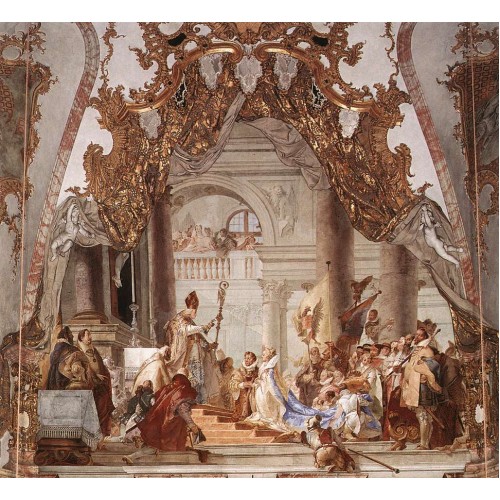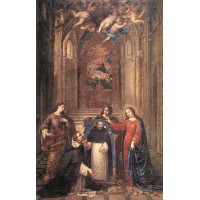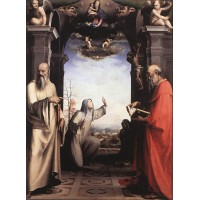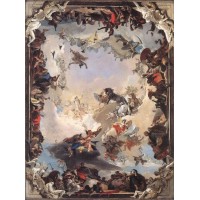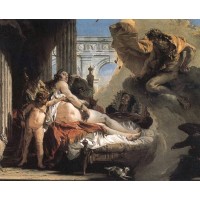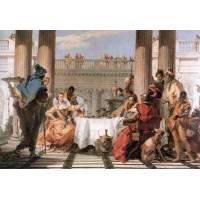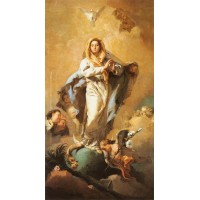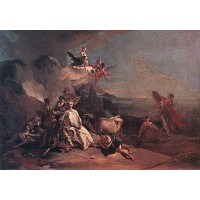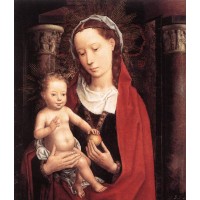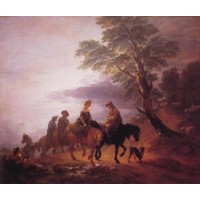The Marriage of the Emperor Frederick Barbarossa to Beatrice
- Artist: Giambattista Tiepolo
- Categories: Religion painting, Rococo,
- Product Code: giambattista tiepolo 48
Available Options
The Marriage of the Emperor Frederick Barbarossa to Beatrice
Artist: Giambattista Tiepolo
Fresco; Size: 400x500cm; Residenz, Wurzburg.
In 1750 Tiepolo was invited to Wurzburg to decorate the banquet hall known as the Kaisersaal in the Residenz of the new prince-bishop Karl Philipp von Greiffenklau. He may have been guided in the undertaking by the Modest Opinions on the Painting of the Prince's Grand Dining Room supplied by the court council. These had called for the representation of the scenes of the wedding of Emperor Barbarossa to Princess Beatrice of Burgundy, which had taken place at Wurzburg in 1156, and the investiture of Bishop Herold of Wurzburg as duke of Franconia by Barbarossa in 1168, two quite distant and different events that the painter was required to present as if they were linked by a relationship of cause and effect: in gratitude for the hospitality he had received on the occasion of the fruitful marriage, the emperor invested the bishop as a vassal of the Holy Roman Empire. The painter used the rococo stuccoes of the room to frame the scenes in a theatrical setting on which the curtain is rising, with a markedly illusionistic effect. As was customary, in order to avoid damage to the walls, the decoration commenced from the ceiling, where he painted Apollo Leading Beatrice of Burgundy to the Genius of the German ,Vation. It continued with the scenes at the sides, which were painted in such a way as to make their illumination coincide with the natural lighting of the room. The Marriage (1751-53), set in a Palladian-style basilica and with figures dressed in 16th-century clothing, is attended by papal nuncios and prince-electors, the grand marshal of the empire with his sword drawn, located under the imperial insignia as ceremony required, and the grand marshal of Franconia on the far right. On the left, kneeling and wearing an amaranth cloak, is the bride's father, while the officiating bishop has been given the features of the client. The dwarf and court jester, with his baton suspended in the void, connects the painted scene with the real space of the room. But attention is focused on the woman, in a scene that evokes Rubens's Coronation of Marie de Medicis. In the The Investiture of Herold as Duke of Franconia (1751-53), Barbarossa offers the imperial scepter to the bishop to be touched in a sign of feudal submission, while the chancellor reads the parchment of investiture and two pages hold the pluvial and the crown, symbols of the two branches of power, the spiritual and the temporal. The imperial grand marshal with his sword unsheathed and the grand marshal of Franconia are present in this scene too. The page who is staring out of the painting and the dog in the foreground perform the same function as the dwarf in the Marriage. The decoration continued on the ceiling of the main staircase with The Olympus and the Four Continents, where we can find portraits not just of the client but also of the painter and his son Giandomenico.
China Oil Painting Gallery supply The Marriage of the Emperor Frederick Barbarossa to Beatrice of Giambattista Tiepolo by customer sizes. 100% hand painted museum quality painting reproduction on canvas for sale . We can paint by any size. If you need a customer size that out of above list, please contact with us.

